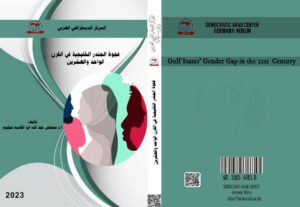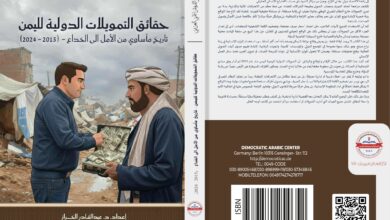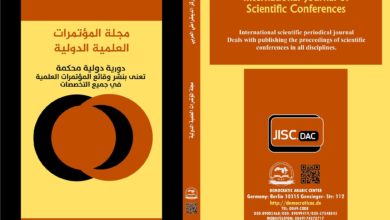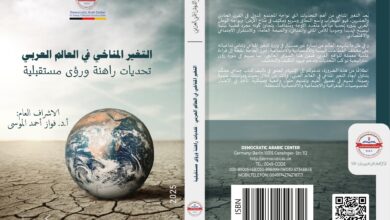فجوة الجندر الخليجية في القرن الواحد والعشرين
Gulf States’ Gender Gap in the 21st Century
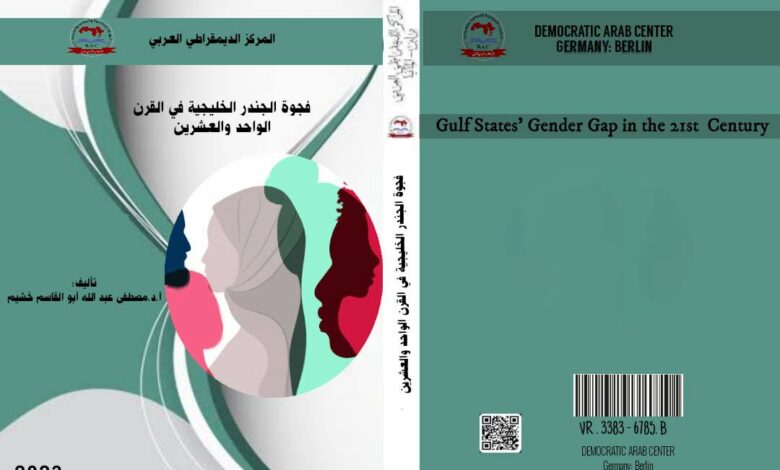
تألبف : أ.د.مصطفى عبد الله أبو القاسم خشيم
نسخة “pdf”-
فجوة الجندر الخليجية في القرن الواحد والعشرين
الطبعة الأولى “2023″ –من كتاب: – فجوة الجندر الخليجية في القرن الواحد والعشرين
جميع حقوق الطبع محفوظة #المركز_الديمقراطي_العربي ولا يسمح بإعادة إصدار هذا الكتاب أو اي جزء منه أو تخزينه في نطاق إستعادة المعلومات أو نقله بأي شكل من الأشكال، دون إذن مسبق خطي من الناشر .
تقديم :
ان المتتبع لأدبيات المساواة بين المرأة والرجل يلاحظ وجود بيانات تصدر سنويا من قبل مؤسسات بحثية دولية وإقليمية إلي جانب منشورات أكاديمية باللغتين العربية والأجنبية. إن توفر البيانات دفع الكثير من الباحثين لوصف وتحليل العلاقة بين فجوة الجندر الاقتصادية ومدى تمكين المرأة في مجال التعليم، وبالتالي يلاحظ تجاهل الأدبيات لمجالات أخرى لا تقل أهمية عن ذلك. وتنبع أهمية هذه الدراسة من وصف وتحليل علاقة الفجوة الجندرية الخليجية بالتنمية البشرية في المجالات المختلفة. عليه، فإن هذا الكتاب يهدف الي الاجابة على مجموعة التساؤلات التالية: إذا كانت دول مجلس التعاون الخليجي قد حققت بالفعل تنمية بشرية مرتفعة جدا جدا، فهل تمكنت بالتالي من تضييق فجوة الجندر في الألفية الثالثة؟ وهل يمكن قياس الفجوة الجندرية الخليجية ؟ وما هي العوامل الاكثر تأثيرا على الفجوة الجندرية الخليجية المعاصرة؟ وما هي سيناريوهات تقليص الفجوة الجندرية الخليجية في الالفية الثالثة؟ إن محاولة الإجابة المؤقتة على التساؤلات السابقة، قادتنا عموما إلى تطوير فرضية أساسية، تتوقع وجود علاقة قوية ودالة احصائيا بين تحقيق مستويات عالية للتنمية البشرية وتقليص الفجوة الجندرية الخليجية، وفرضية أخرى عدمية أو صفرية لا تتوقع مثل هذه العلاقة.
وبناء على الإشكالية والفرضيتين السابقتين ، فإن أهداف هذه الدراسة تتمثل في وصف وتحليل والتنبؤ بتأثير التنمية البشرية على فجوة الجندر الخليجية في إطار مقارن يأخذ في الحسبان انجازات بعض البلدان المتقدمة في هذا السياق ، مثل سويسرا التي احتلت الترتيب الاول في مجال تقليص هوة الجندر على مستوى العالم ككل عام 2021. وتمشيا مع الاشكالية والفرضيتين السالفتي الذكر، فإن هذه الكتاب قد تم تقسيمه الي مجموعة المحاور التالية: مفهوم المساواة بين المرأة والرجل أو فجوة الجندر الخليجية (الفصل الأول)، والتنمية البشرية الخليجية (الفصل الثاني)، وتأثير التنمية البشرية على فجوة الجندر الخليجية (الفصل الثالث)، وخاتمة للكتاب فيها النتائج والتوصيات.
Abstract
The literature review of equality between women and men reveals that international and regional research institutions, e.g., the UNDP and the Global Economic Forum, issue data annually. Academic publications in Arabic and foreign languages are considerable. Data availability prompted many researchers to describe and analyze the relationship between the economic gender gap and women’s educational empowerment process. However, the literature ignores other equally important variables, such as the political gender gap and the impact of human development. The importance of this book stems from the description and analysis of the relationship between the Gulf gender gap and human development in various fields, e.g., economic and political fields.
Therefore, this book aims to answer the following questions: If the countries of the Gulf Cooperation Council have already achieved very, very high human development levels, legitimate questions may ask: Can they narrow the gender gap in the new Millennium? Is it possible to measure the impact of human development on the gender gap in the Gulf region? Moreover, what are the factors that most affect the contemporary Gulf gender gap? What scenarios for narrowing the Gulf gender gap in the new Millennium? The immediate answer to the previous questions generally leads us to develop a tested causal hypothesis. It is expecting a statistically significant relationship between achieving high levels of human development on the one hand and reducing the Gulf gender gap on the other hand, and a null assumption that rejects this relationship.
Based on the previous hypotheses, the objectives of this book are to describe, analyze and predict the impact of human development on the Gulf gender gap in a comparative framework. This study considers and compares the achievements of developed countries in this context, such as Switzerland, which ranked first in reducing the gender gap in the world in 2021. Accordingly, this book may divide into the following: the concept of the Gender gap and the Gulf gender gap (chapter one), Gulf human development (chapter two), the impact of human development on the Gulf gender gap (chapter three), and the conclusion.
- الناشر: المركز الديمقراطي العربي للدراسات الإستراتيجية والسياسية والاقتصادية

